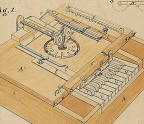

Immediately following the repulse of Pickett’s Charge at the Gettysburg reenactment in 1988, an eerie quiet fell over the field. Thousands of participants, as well as tens of thousands of spectators, stood silently on the sun-drenched former cattle farm about six miles south of the Pennsylvania town.
Then, at the representation of the Angle—the vortex of the battle on July 3, 1863—a lone, mounted bugler rode out from the Union lines and played Taps answered by another bugler somewhere on the Confederate side. When they finished, a roar reverberated from the Union reenactors, co-mingled with a Rebel Yell. Reenactors and spectators alike wept.
“A mystical thing,” recalls Tom Downes, a 1988 reenactor.
“We knew that we were a part of something that was very, very big,” another participant says.
In the 1980s and 1990s, Civil War reenacting reached a high-water mark with thousands of living historians fighting pretend battles and camping near Manassas, Antietam, Gettysburg, and other national military parks. (The federal government bans reenactments at all national military parks, except Cedar Creek in Virginia.) But with hundreds of middle-aged and older reenactors putting away their muskets, kepis, and woolen garments for good, reenactments today rarely draw more than 1,000 participants. Reenactors from younger generations, meanwhile, have failed to swell






